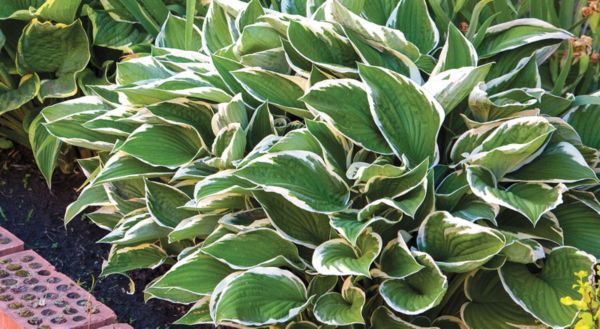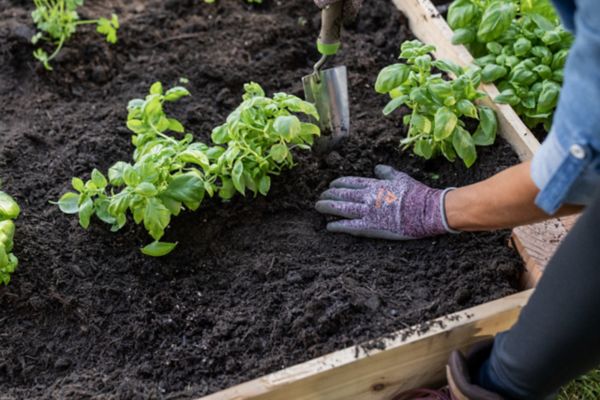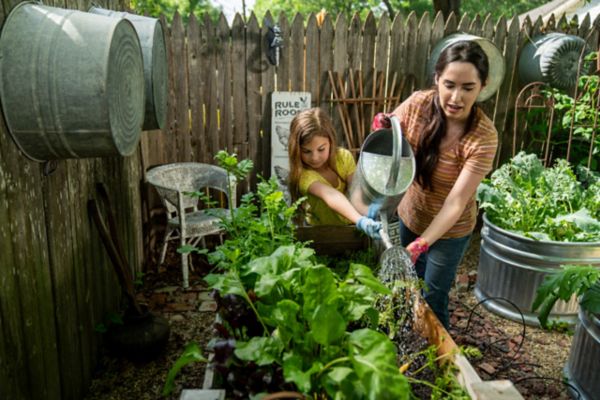How to Grow Onions
Authored by Leah Chester-Davis
Soups, stews, sandwiches, sauces, and meat and vegetable dishes all benefit from the addition of onion. This staple in the kitchen and the garden presents us with several options.
A member of the allium family, onions and its close relatives, leeks, shallots, chives, and garlic all elevate the flavor profile of numerous culinary dishes. Soups, stews, sandwiches, sauces, and meat and vegetable dishes all benefit from the addition of this vegetable. This staple in the kitchen and the garden presents us with several options. Among them are green onions (sometimes called scallions or bunching onions) and bulb onions, which may be white, yellow, or purple, each with different flavors when it comes to sweetness or pungency.
Onions have nutritional value in terms of vitamins, minerals, and fiber for good health. This is a cool-season crop that can be planted in both the spring and the fall. Spring onions have a mild, sweet flavor. When paired with spring lettuces and tossed with a simple vinaigrette, they provide the delicate, fresh-from-the-garden taste that you will look forward to all year. Onions harvested in the summer and fall, typically bulb onions, range from sweet to full-bodied flavor and are the go-to ingredient to flavor numerous dishes.
About onions
| Botanical name: | Allium cepa |
| Common name: | Onion |
| Plant type: | Biennial grown as an annual |
| Size: | 1 to 3 feet |
| Sun exposure: | Full sun |
| Soil type: | Fertile, well-drained soil |
| Soil pH: | 6.2 to 6.8 |
| Hardiness zones: | Numerous zones |
| Average first frost: | Varies by region |
| Average last frost: | Varies by region |
| Container friendly: | Yes |
| Beginner friendly: | Yes |
Growing
Onions are easy to grow. Like most vegetables, they need plenty of sun and rich, healthy, loose soil with plenty of organic matter and a pH of 6.2 to 6.8. Onions can be grown from seeds, sets, which are tiny, immature bulbs, or transplants.
Onions are a cool-season crop and in many regions of the country are planted in the fall for harvest the following spring or summer. In other areas, a spring planting is best. Here are some general guidelines:
- In warmer regions, zone 7 and warmer, seeds for short-day bulb onions are often planted in the garden in September through October, but seeds may not grow well in some Southern regions. Onion sets can be planted in early spring before the last frost date. Transplants are best planted in early spring for late spring and early summer harvest.
- In cold regions, zone 5 and colder, it may be best to start with long-day sets or transplants and plant in the garden in the spring when the soil can be worked, around late March or early April.
- When it comes to day-neutral types, they typically are planted in the spring in cold regions and in the fall in warm regions.
- Check with your county Extension office or local garden center for best varieties and times to plant in your region.
The best onions with a longer shelf life are yellow onions followed by red and white types.
Onions are classified as long, intermediate, or short-day varieties, which is based on the number of daylight hours they need to make a bulb.
Long-day varieties require 16 or more hours of daylight.
Long-day varieties seem to be most suited to Northern latitudes such as the Midwest and Northeast.
Intermediate (also called day neutral) varieties require 13 to 14 hours.
Like long-day, intermediate day varieties seem to be most suited to Northern latitudes such as the Midwest and Northeast.
Short-day varieties set bulbs with about 11 to 12 hours of daylight.
Short-day varieties seem to be most suited to Southern latitudes such as the warmer South.
Planting
Seeds: Plant seeds ½-inch deep. Direct seeding may not give long-season varieties time to grow and form bulbs. For these, it’s best to use transplants or sets.
Transplants: Start seeds indoors about 8 to 10 weeks before the last frost date. Plant the seeds ¼-inch deep in cells or flats. A few weeks before the last frost date, harden them off by setting outside on a warm day for 30 minutes, gradually increasing their time outdoors over a period of about 7 days. Onions can tolerate some frost, so after they are hardened off, plant them outdoors 2 to 4 weeks before last frost date. Plant transplants about ¾-inch deep. Space green onions or scallions about 1-inch apart. Space smaller bulbs 2-inches apart and allow 4- to 6-inches for larger bulbs.
Sets: Select sets that are no larger than ¾ inch. Larger sets are likely to bolt, which means they will send up flower stalks. Plant sets about ¾- to 1-inch deep 2 to 4 weeks before the last frost date. Space small bulbs 2-inches apart and large bulbs 4-inches apart.
Transplants or sets may typically be labeled as white, yellow, or red, though some regions of the country are noted for certain cultivars and varieties, and local garden centers may have them available for the home gardener. Examples are Walla Walla Sweet onions in Washington and Vidalia onions in Georgia.
Keep weeds in check by using mulch such as weed-free straw, chemical-free grass clippings, or other organic material.
Onions are shallow-rooted; therefore they need constant, even moisture for good growth and bulb formation. They will need about 1-inch of water each week from rainfall or irrigation.
When the plants reach maturity (check maturity date on your variety) and when the tops begin to fall, cease watering.
Fertilizing
If possible, get a soil test and follow recommendations before planting. In the absence of a soil test, add plenty of organic material to your garden and plan on sidedressing (spreading fertilizer along the row of onions about six inches away from the plant and lightly worked into the soil) a couple of times during the growing season.
Minnesota Extension recommends a fertilizer application once or twice during the growing season, with urea (45-0-0) at a rate of ¼ to ½ pound per 25 feet row.
When using fertilizer, do not use “weed and feed” types on vegetables.
Controlling Pests, Diseases, and Other Problems
Onions typically do not have problems with insects. Onion maggots can be a problem, boring into the plant stems and causing the plants to turn yellow and wilt. Thrips can also damage them. If needed, apply Bacillus thuringiensis (Bt), an organic insecticide. Follow the label directions.
Several types of rot can affect them. The best way to avoid disease problems is to adopt good cultural practices such as starting with good, healthy soil that has plenty of organic matter, keeping moisture levels even, suppressing weed growth, and practicing crop rotation (don’t plant onions where you’ve grown them or any members of the allium family the past four years).
Harvesting and Storing
Green onions are ready to harvest when they are about 6- to 12-inches tall.
Bulb onions are ready when about half of the tops are dry and falling over. It is important for bulb health to allow the foliage to fall over on its own rather than knocking them over, which can bruise the neck and lead to rot.
When the foliage falls over, the bulbs have quit growing. Use a spade fork to lift the dried stems and the bulbs from the ground.
If the weather is dry and warm, allow them to start the curing process by drying outside for several days. If days are rainy or with high humidity, take the onion indoors.
To cure, they need to be in a warm, well-ventilated area for up to four weeks. Lay them in a single layer with plenty of air circulation. When their outer skin becomes dried and crispy, they have cured to a desired level. Trim off the tops about an inch or two above the bulb unless you wish to use the stems to braid the onions together. Brush off any extra soil.
Storing
After onions are cured, store them in a cool, dry place.Hanging them in mesh bags where they get air circulation can be an option in a garage or dry basement.
Store them away from any fruits or vegetables that release ethylene gas, such as potatoes, apples, and bananas, which can cause onions to sprout and decay.
To cure, onions need to be in a warm, well-ventilated area for up to four weeks.
Expert Tips
- Grow varieties best suited for your part of the country. Your county Extension office or local garden center should be able to provide you with specific information on varieties and best times to plant for your region.
- Start with good, healthy, loose soil that has plenty of decomposed organic material.
- Use a layer of straw mulch to suppress weeds, which compete with onions for nutrients. Be careful when removing weeds from around onion plants. Either hand pull weeds or lightly cultivate to avoid damaging the bulbs.
- During hot, dry weather, keep your onions watered to allow for proper growth.
Frequently asked questions
Can I plant onions outside before danger of frost has passed?
Yes, as soon as you can work your soil in the spring, anytime between 4 to 6 weeks before the last frost, you can plant onion seeds. Transplants and sets can go in the ground 2 to 4 weeks before the last frost, unless the temperatures in your region call for extreme cold.
Will onions grow in heavy clay soil?
Yes, if you amend your soil with compost or aged manure. Add a couple of inches of compost and work it into the top 6 to 8 inches of your soil. This will help the soil drain better and provide a loose, less compacted growing area for your onions to grow and form bulbs.
Will onions grow in a container?
Yes. Use a potting mix suited for growing vegetables and follow the basic cultural practices of adequate watering, sunshine, and fertilizing. Do not use garden soil in containers as it can be too heavy and not drain properly.
How do I know when I can harvest my onions?
Each variety may be different. Seed packets or plant labels often provide details such as days to harvest, in addition to the required day length and the optimal planting time.
Why don’t my onions form bulbs?
It may be that you have not planted a bulbing cultivar for your region. Other reasons could be compacted soil.





